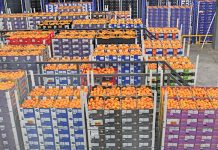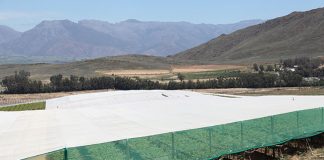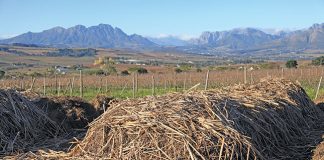
Photo: Denene Erasmus
This year marks the end of the United Nations’ Millennium Development Goals (MDG) monitoring period. One of these goals was to reduce the proportion of hungry people by half. This target was not reached. According to the UN’s Food and Agricultural Organisation (FAO), global hunger declined to 795 million undernourished people, or a reduction of 167 million over the last ten years.
READ:Keeping goats for milk: a beginners guide
Despite overall progress, marked differences between regions persist. Sub-Saharan Africa still has the highest prevalence of undernourishment, with only modest progress in recent years, according to an FAO report. It is estimated that one in four people in the region remains undernourished, compared with the global average of one in nine. Some regions, such as
Latin America, the eastern and south-eastern regions of Asia, the Caucasus and Central Asia, and the northern and western regions of Africa, reached the MDG target.
To continue the battle against hunger, the world will need new solutions to counter the challenges posed by the rise in population, the scarcity of water and agricultural resources, and the impact of climate change. It is against this backdrop that organisers of the 2015 Universal Expo in Milan, held from 1 May till 31 October, chose to focus on food and its production.
The Italian pavilion @Expo2015Milano is all about chaos and beauty (much like farming) @FarmersWeeklySA pic.twitter.com/g2kISzCyEd
— Denene Erasmus (@agri_erasmus) May 2, 2015
Universal Expo
Innovation has always been the theme of this five-yearly, six-month-long event, the first of which – the Universal Exposition – was held in London in 1851. A total of 42 countries participated in that year. Initially, the focus was primarily on new inventions. At the expo in Paris in 1855, for example, the first automatic sewing machines were presented by Singer. In 1939 the television set was demonstrated in New York.
In 1958, advances in computers were showcased in Brussels. In recent years, according to the main organisers, the expo has been used to encourage countries to find solutions to the major issues facing humanity. Expo Milano 2015 aims to find solutions that will guarantee “every person on the planet’s right to have enough healthy, safe food, with full respect for the environment”.
With the theme, ‘Feeding the Planet, Energy for Life’, this year’s expo will provide participating countries “an opportunity to reflect upon, and seek solutions to, the contradictions of our world”. The expo and its participants, say the organisers, will provide the world with a set of guidelines designed to ensure sustainable development, food security and the quality of the production chain.
When it’s finished, it’s finished
Perhaps the most thematically striking of all the country’s exhibitions is that of the Swiss Pavilion. Here, visitors must make choices about resource use that will directly affect other visitors. This reflects how individual and national resource consumption has a global impact.
Organisers of the pavilion said they expected approximately three million people to visit the pavilion, and explained that the concept behind the design is to “stimulate reflection on nutrition and food issues, including personal responsibility, the fair sharing of resources, and sustainability”.
Four towers, visible from a distance, serve as silos and are stacked with boxes of produce – water, salt, coffee and apples – one type of produce per tower. Visitors access the towers by lift and once on top they are able to help themselves to any amount of product provided. However, they are reminded that, for the duration of the expo, the towers will not be refilled.
“How much will be left for later visitors – and for how long – will be determined by the consumer behaviour and level of awareness of each visitor,” said the exhibition’s organisers. As the towers gradually empty, the platforms inside the towers drop steadily, changing the structure of the pavilion.
The four products were selected on the basis of specific criteria: storage properties, sustainability, climatic conditions, availability, and the products’ relevance in the Swiss agri-food industry. Coffee has become Switzerland’s main export food product, overtaking chocolate and cheese. The apple rings are made from varieties of Swiss apple trees. The salt comes from underground salt deposits. And the water comes from the local aquifer.
At the start of the expo, the towers were stacked with two million sachets of salt, 2,5 million single-serving Nescafé coffee sticks, 350 000 reusable cups for drinking water (with 96 000l of drinking water available on-tap in the tower), and 420 000 small packets of dried apple rings.
The progressive emptying of the towers is being recorded in real time. By mid-June, one and a half months into the six-month expo, more than 10% of the coffee and salt had been consumed, and 25% of the apples and water had gone.
Finding the will to fight waste
One of the cruel ironies of the world is the amount of food that goes to waste every year while vast numbers of people across the world suffer from undernourishment. The organisers of the expo recognise the “battle against waste” as one of the main problems linked to hunger in the world. Despite the fact that almost 800 million people worldwide are undernourished, 1,3 billion tons of food are wasted every year.
Japanese pavilion @Expo2015Milano features a beautiful multimedia display of the water cycle @FarmersWeeklySA pic.twitter.com/drngvUK0CJ
— Denene Erasmus (@agri_erasmus) May 2, 2015
“For these reasons, we need to make conscious political choices, develop sustainable lifestyles, and use the best technology to create a balance between the availability and the consumption of resources,” say the organisers in a statement. According to the Council for Scientific and Industrial Research, approximately 10 million tons of food are lost in South Africa each year due to waste.
Realistic, workable solutions expected from participants
In order to make a meaningful contribution, during the six months of the expo, participating countries will propose effective solutions in response to challenges, including food waste. One project created by Expo Milano 2015 aimed to involve school children. It challenged pupils in Italy and Switzerland to come up with a mobile phone app relevant to the theme of the expo.
A group of students from the Italian town of Parma won the challenge, with an app aimed at addressing food wastage. The ‘SharingFood’ app invites users, restaurants and supermarkets to offer their unsold products and surplus food to those who are willing to pick it up. The expo is also sending surplus food from the exhibition grounds to a local soup kitchen that feeds about 100 people daily.
For more information on this year’s Universal Expo, visit expo2015.org.
This article was originally published in the 26 June 2015 issue of Farmer’s Weekly.













